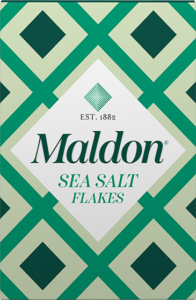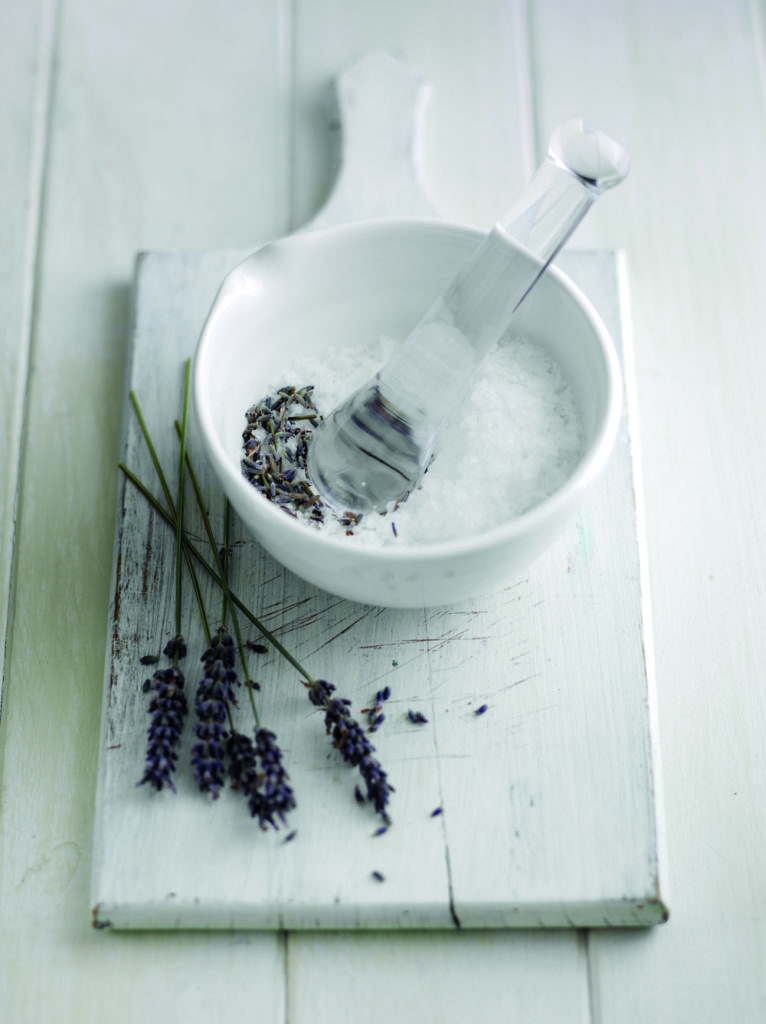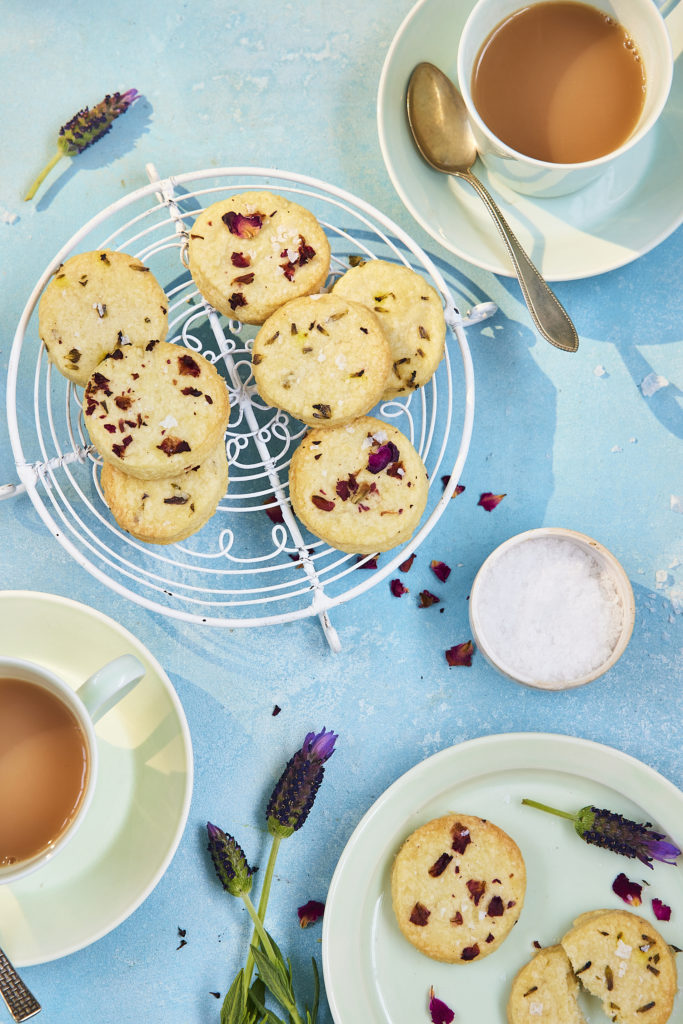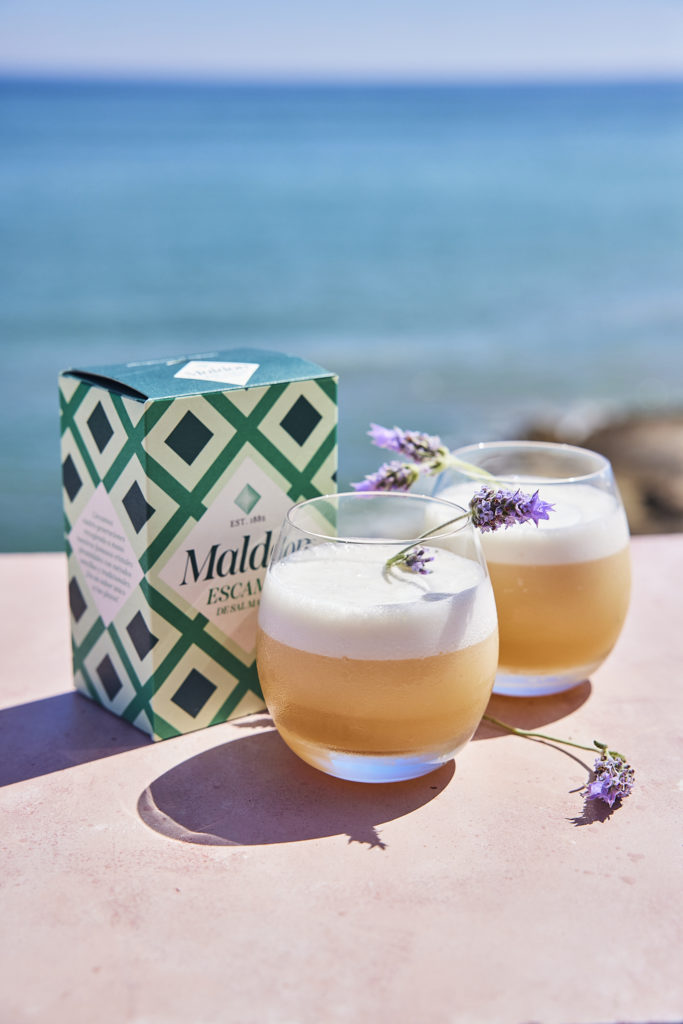Lavender flowers have a distinctive floral flavour, but as it is part of the mint family, which allows the flower to contain hints which are closely similar to mint and rosemary. This means that when lavender is dried and infused with sea salt, it works brilliantly with sweet bakes such as shortbread biscuits, chocolate, and crème brûlée. You can also cook with lavender to infuse it with savoury dishes such as lamb, fish, and chicken to give a gentle sweetness.
Whilst using lavender salt in both sweet and savoury dishes, did you know that you can add the flavoured sea salt into cocktails! For example, it could be used to salt the rim of a homemade cocktail to make a margarita with a twist! Or, you can use the lavender salt as part of the main ingredients with our delicious lavender nectarine whiskey sour cocktail – perfect to be enjoyed in the sun! Make sure to not discard of the lavender buds completely, as you can use them to garnish the cocktails and impress your guests.
The possibilities are endless with lavender salt, plus once you make a batch you can store it in an airtight container or mason jar for up to 6 months!
How to make lavender salt?
- You must make sure the lavender you use is dried – you can buy dried and edible lavender from the supermarkets, however if you are cutting from flowers at home then simply remove the flowers and allow to dry for a week before using.
- Place the dried lavender flowers into a pestle and mortar and crush until they are broken up and mostly ground.
- Mix the grounded dried flowers with the Maldon Salt evenly. Store in an airtight container or mason jar.
What dishes can you use lavender salt with?
As lavender sea salt is completely edible, the combinations are completely up to you taste buds!
A dish that would really impress your guests would be lamb. Because lavender is similar to rosemary, the dried flower is a perfect accompaniment when it comes to cooking with lamb. The sea salt elevates the sweetness of the lavender, allowing the seasoning to cut through the rich, fattiness of the meat, resulting in a succulent, aromatic main course.
For a side dish recommendation, try sprinkling the lavender salt on some crispy, Hasselback potatoes. The fragrant, dried culinary lavender with the sea salt gives the roast potatoes a floral tone to it’s natural earthiness, allowing a sweet balance between both flavours and adding mystery to the dish.
If you are a dessert person, try adding lavender salt as a topper for your homemade ice cream! The floral accents from the lavender gives a natural, fresh sweetness to the ice cream, where the sea salt will elevate this further and balance out any bitterness.
Is all lavender safe to eat?
Please note, not all lavender is safe to eat! Culinary lavender is cultivated from Lavandula angustifolia, which is known as ‘true’ lavender. This has a lot less oil than the usual lavender flowers used in perfumes or soaps.
You can tell if your lavender is edible by the flowering. Keep a look out for blooms with a much milder appearance – this means it’s safe to eat! You can also do a smell test. If it has a sweet, floral scent, this could indicate that it is angustifolia, which is safe to eat. On the other hand, if it has a strong, piney almost eucalyptus scent, this flower is recommended for perfume/soaps only.




